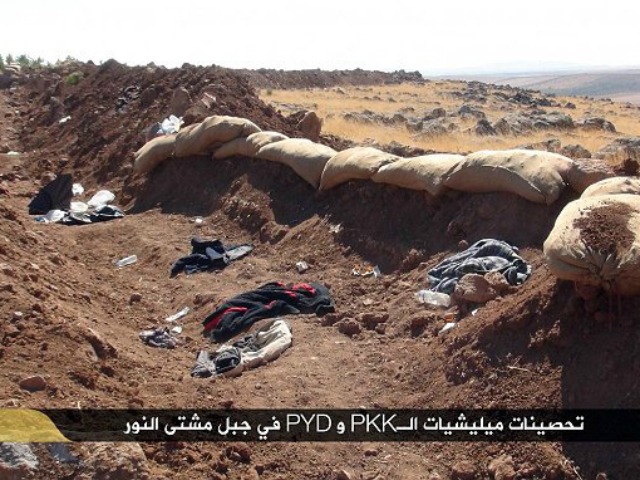Islamic State jihadists may have used chemical weapons to kill Kurdish fighters defending the Syria-Turkey border town of Kobane, a number of disturbing and graphic photos obtained by the Middle East Review of International Affairs (MERIA) suggest.
The pictures show Kurdish fighters who appear to have been killed this July in Kobane by the Islamic State (IS, also known as ISIS and ISIL) with some sort of chemical agent, possibly mustard gas. Warning: Graphic content below:




Kurdish forces are still fighting to defend Kobane, about a third of which is now controlled by IS militants.
“According to expert Israeli sources who have seen the pictures, they appear to indicate the use of some form of chemical agent, probably mustard (blister agent), but it is not possible to conclusively confirm this without further investigation,” MERIA, which monitors the Middle East, reported on October 12.
Reportedly, evidence indicated that IS employed some sort of chemical agent, at least once, in its July 2014 campaign to seize Kobane from Kurdish fighters of the YPG (People’s Protection Units).
“The use of the chemical agent took place on July 12th, in the village of Avdiko, in the eastern part of the [Kobane] enclave [now in Islamic State hands],” Kurdish activists told MERIA.
MERIA noted that Nisan Ahmed, the health minister of the Kurdish authority in Kobane, was tasked with setting up a medical team to look into the incident.
Ahmed concluded that the bodies of three Kurdish fighters showed no sign of bullet wounds.
Instead, “Burns and white spots on the bodies of the dead indicated the use of chemicals, which led to death without any visible wounds or external bleeding,” reported Arabic-language Al-Modon on July 16, according to MERIA.
MERIA was allowed exclusive access to the pictures of those bodies.
It is possible that ISIS acquired chemical weapons in June after it captured the Muthanna compound in Iraq, which was built by Saddam Hussein.
MERIA pointed out that Mohammed Ali Al-Hakim, Iraq’s ambassador, while speaking about IS overrunning Muthanna, “Singled out two bunkers at the facility, 13 and 41, as being of particular concern.”
On July 9, the Associated Press quoted a UN report showing that in bunker 41 there were “2,000 empty 155mm artillery shells contaminated with the chemical warfare agent mustard, 605 one-tonne mustard containers with residues, and heavily contaminated construction material.”
At the time, the U.S. State Department tried to play down the significance of the Islamic State capturing Muthanna.
“We remain concerned about the seizure of any military site by the ISIL,” said Jen Psaki, the State Department spokeswoman, in a written statement in June. “We do not believe that the complex contains CW [chemical weapon] materials of military value and it would be very difficult, if not impossible, to safely move the materials.”
An April 2007 CIA report challenges the State Department’s assertion.
The report confirms that the Muthanna compound was used for the production of chemical weapons including mustard gas. It also mentions that investigations have fallen short in “unambiguously” determining the fate of the weapons and the nature of the stockpiles at the site.
“There are no indications that this situation has changed in the period since the report,” mentioned MERIA.
“The evidence appears to support the contention that on at least one occasion, Islamic State forces did employ some form of chemical agent, acquired from somewhere, against the YPG in [Kobane],” it added.
“The probable possession by the Islamic State of a CW [chemical weapon] capability is for obvious reasons a matter of the gravest concern, and should be the urgent subject of further attention and investigation,” the MERIA report concluded.

COMMENTS
Please let us know if you're having issues with commenting.